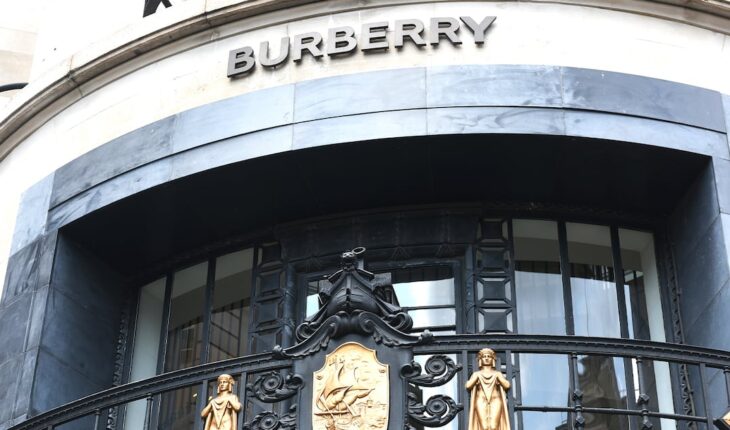
In late October, the Bernstein analyst Luca Solca published a research note with the subject line “Burberry: back to basics.” He made the case that the struggling British brand’s new chief executive, ex-Coach head Josh Schulman, would have a relatively quick and straightforward path to recovery by doubling down on trench coats, check patterns and other touchstones developed over the last 150-plus years.
It was sound advice, and when the company reports third-quarter results on Thursday, Schulman is likely to announce some version of that strategy. For proof, look no further than the brand’s latest campaign, starring Queen Elizabeth II portrayer Olivia Colman and pitching reimagined archival outerwear. It’s also what Burberry has always done. Every so often, a designer or CEO strays too far from mainstream perceptions of the brand and is swiftly punished by shoppers and investors, requiring a pivot back to, well, basics. Here’s an example from 2009.
Solca is probably right that the strategy will work once again. Burberry is expected to report another period of sliding sales, after seeing a 22 percent decline in its fiscal first quarter. Plenty of consumers still love the brand; they’re just not used to paying such high prices for it, and new products haven’t enticed enough shoppers to make the leap.
Under Schulman, Burberry is already walking much of that back, stocking stores with more merchandise at entry luxury price points. Designer Daniel Lee has tried his own version of “back to basics” by reintroducing the brand’s equestrian knight motif and a renewing the focus on Britishness, though his ultra-contemporary, somewhat subversive take on British identity still feels too niche to give a clear direction to a global brand. Investors will surely be taking the temperature on whether Lee’s days are numbered, or if he’ll be given time to adapt his vision for a broader audience.
Whatever strategic updates Schulman might propose, questions will linger regarding whether the company still has the scale and financial firepower to execute a turnaround. Fixing Burberry may require more drastic moves than dusting off beloved brand codes. This is why investors were so quick to buy a report by Miss Tweed that Moncler was in talks to buy the brand.
Whether Burberry is in play as an acquisition target remains to be seen. Some analysts also see Kering as a potential suitor. For now, the acquisition talk remains speculative; the company’s shares are back to where they traded before the Miss Tweed report, after having risen as much as 8 percent.
The Week Ahead wants to hear from you! Send tips, suggestions, complaints and compliments to brian.baskin@businessoffashion.com.





